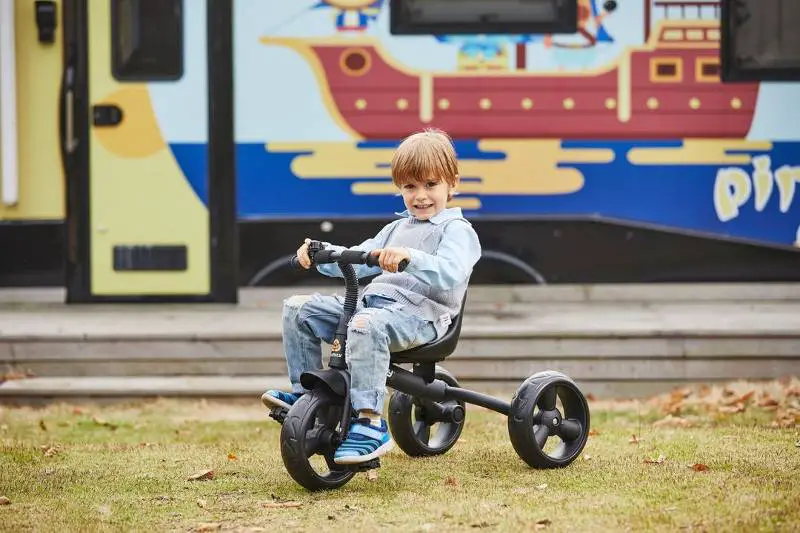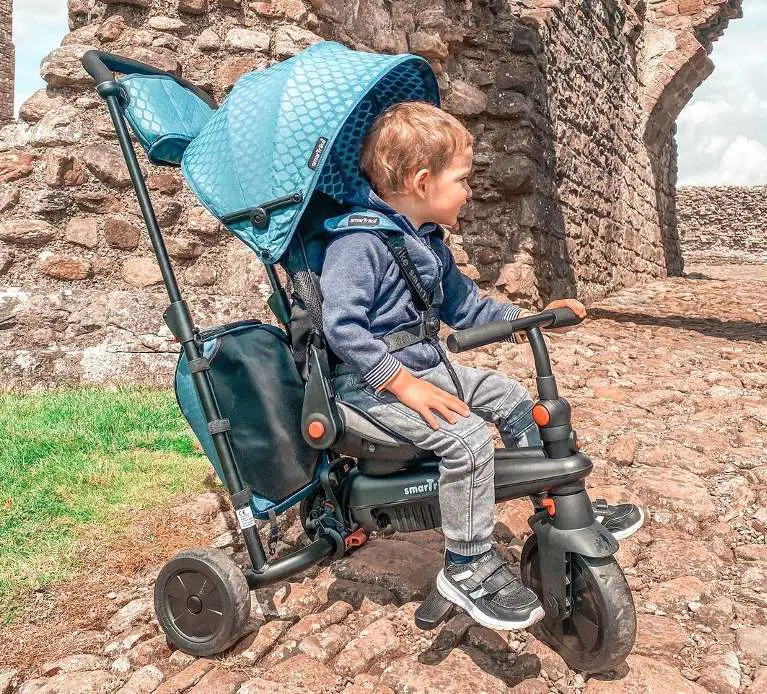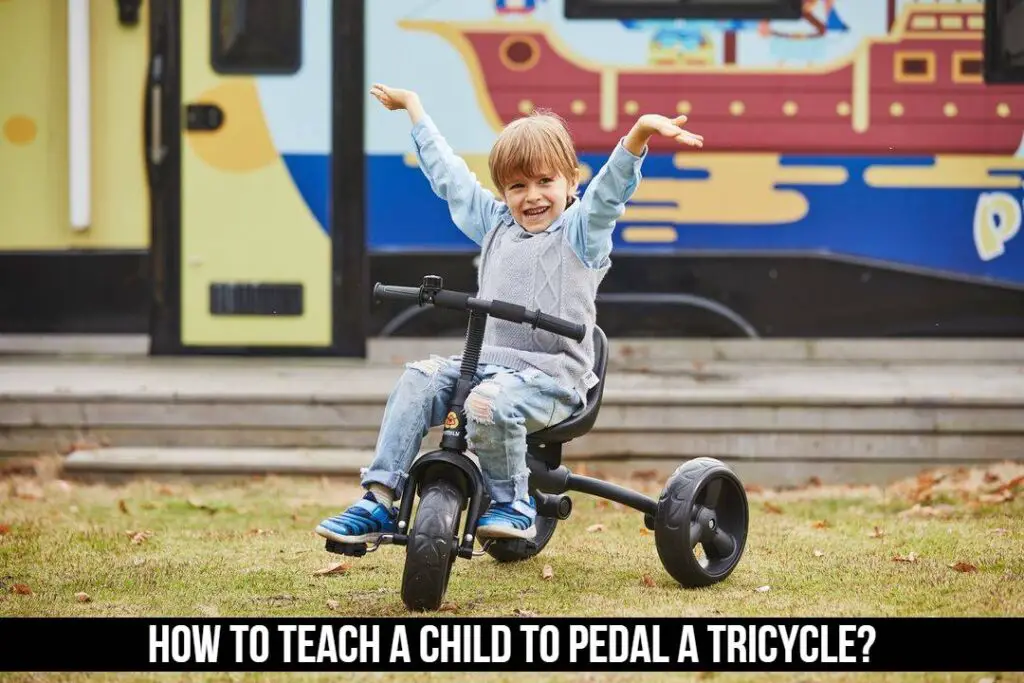If you’re a parent or caregiver, you know how exciting it is to watch a child learn new skills and achieve new milestones. But it can also be a bit nerve-wracking, especially when it comes to teaching a child to ride a tricycle.
The problem is that for many children, the act of pedaling can be intimidating and overwhelming. They might be afraid of falling, or they might not understand how to coordinate their legs with the pedals. As a result, they might resist trying to ride a tricycle altogether.
But don’t worry, we’re here to help! In this blog post, we’ll provide a step-by-step guide on how to teach a child to pedal a tricycle, using a method that’s easy to follow and effective. By the end of this post, your child will be zipping around on their tricycle with confidence and joy.
So, if you’re ready to help your child overcome their fear of pedaling and learn to ride a tricycle like a pro, keep reading. We’ve got you covered with the best tips and techniques for teaching a child to pedal a tricycle.
What You Will Learn?
Benefits of Tricycling For Children
Physical Benefits – Tricycling offers a variety of physical benefits for children. It helps improve gross motor skills, balance, and coordination. It also encourages the use of leg muscles and strengthens the core. In addition, tricycling enhances reaction time and spatial awareness.
Cognitive Benefits – Tricycling is not only great for physical development, but it also has cognitive benefits. It encourages children to explore their environment, learn to solve problems, and develop problem-solving skills. It also helps them practice coordination, planning, and decision-making.
Social Benefits – Tricycling is a great way for children to build confidence and social skills. It gives them the opportunity to interact with their peers and build relationships. It’s a fun activity that allows children to connect with others and have fun together.
Common Challenges and Fears When Learning to Pedal a Tricycle

Learning to pedal a tricycle can be a challenge for some children, and it’s completely normal for them to feel a little bit intimidated or overwhelmed at first. It’s important to keep in mind that every child is different and may have unique fears or challenges when it comes to tricycling. Here are some common challenges and fears that children may face when learning to pedal a tricycle, and some tips on how to overcome them:
Fear of Falling
It’s natural for children to be afraid of falling, especially when they are trying something new like tricycling. To help them overcome this fear, it’s important to start slowly and focus on balance and coordination. You can also use training wheels or a balance bike to help your child build confidence and get used to the feel of riding.
Difficulty Coordinating Legs with Pedals
Some children may struggle with coordinating their legs with the pedals on a tricycle. To help them, you can start by having them practice pushing the pedals with their feet while the tricycle is stationary. As they get more comfortable, you can gradually increase the difficulty by having them pedal while the tricycle is moving.
Difficulty Keeping Balance
Keeping balance on a tricycle can be a challenge for some children. To help them improve their balance, you can start by having them practice on a balance bike or by using training wheels. You can also try having them pedal in a straight line to help them build confidence and get the hang of it.
Preparing for Tricycling Success: Choosing the Right Tricycle and Protective Gear
Before you start teaching your child to pedal a tricycle, it’s important to make sure you have the right equipment and protective gear. Choosing the right tricycle and protective gear can help ensure that your child is safe and comfortable while learning to ride, and it can also make the learning process more enjoyable for them.
Here are some tips for preparing for tricycling success by choosing the right tricycle and protective gear:
Choose the Right Tricycle
When shopping for a tricycle, it’s important to consider your child’s age, size, and skill level. A tricycle that is too large or too small can be difficult for your child to ride and may not provide the support they need. Look for a tricycle that is the right size and has features like adjustable seats and handlebars to accommodate your child as they grow.
Invest in Protective Gear
To help keep your child safe while they learn to ride a tricycle, it’s important to invest in protective gear like a helmet, elbow and knee pads, and wrist guards. A well-fitted helmet is especially important to protect your child’s head in case of a fall. Make sure to choose protective gear that fits properly and is comfortable for your child to wear.
Check the Tricycle for Safety
Before allowing your child to ride their tricycle, it’s important to check that it is in good working order. Make sure the tires are properly inflated, the brakes are functioning properly, and all the parts are securely fastened. This will help ensure that your child has a safe and enjoyable tricycling experience.
By taking the time to choose the right tricycle and protective gear, you can help set your child up for success and make their tricycling journey a fun and enjoyable experience.
A Step-by-Step Guide to Teaching Your Child to Pedal a Tricycle

Step 1. Find the Right Spot
Choose a flat, clear area that is free of hazards such as rocks or sticks. You also want to make sure that the area is free of traffic.
Step 2. Make them Ready For a Ride
Start by sitting your child on the tricycle and having them grab the handlebars. Make sure their feet are flat on the floor, and their back is straight.
Step 3. Identify the Pedals
The pedals are usually located near the front wheel. Show your child how to place their feet on the pedals. Make sure their feet are not too close together and that their toes are pointing downward.
Step 4. Push and Pedal
Start by pushing your child as they pedal. This will help them get used to the motion and understand the concept of pedaling. As they get more comfortable, you can start to let go and let them pedal on their own.
Step 5. Practice Steering
As your child becomes more comfortable with pedaling, you can start introducing steering. Encourage them to turn the handlebars in different directions and practice steering in a straight line.
Step 6. Praise and Encourage
Your child will need encouragement, so whenever they do something correctly, be sure to tell them. Don’t forget to praise them for their effort and encourage them when they are having difficulty.
Step 7. Take Breaks
It’s important to remember that learning to pedal a tricycle takes time and practice. Don’t be afraid to take breaks and allow your child to rest. This will help them stay motivated and energized.
Step 8. Ride
Once your child is comfortable pedaling the tricycle, it’s time to take a ride! Make sure you stay close and keep an eye on them as they ride.
Conclusion
Supporting your child’s tricycling journey is an important step in helping them grow and develop. By providing the right equipment, protective gear, and a supportive learning environment, you can help your child overcome any challenges and build their confidence as they learn to pedal a tricycle.
FAQs
What to do if my 4 year old can’t pedal tricycle?
If your child is having difficulty pedaling a tricycle, there are a few things you can do to help them.
1. Start with a balance bike:
Balance bikes are a great way for young children to learn the basics of bicycling. They have no pedals, and instead of pedaling, kids use their feet to push themselves forward. Balance bikes help to build balance and coordination, which are essential elements of learning to ride a tricycle.
2. Use a tricycle with training wheels:
If your 4 year old is having difficulty pedaling, but still wants to ride a tricycle, try using one with training wheels. This will allow your child to get used to the feel of the tricycle, and help them to gain the confidence needed to pedal on their own.
3. Practice with a parent:
Have a parent or guardian push your 4 year old on the tricycle while they try to pedal. This will help them to gain the balance and coordination needed to ride a tricycle on their own.
4. Be patient:
Learning to ride a tricycle takes time, and it is important to be patient and encouraging with your child while they learn. Praise your child when they make progress, and remember to keep it fun.
By following these steps, you can help your 4 year old learn to pedal a tricycle. Good luck!
What age can a toddler pedal a tricycle
A toddler usually begins to pedal a tricycle between the ages of 3 and 4. While some toddlers may be able to pedal a tricycle earlier, most will not have the skill and coordination to do so until they are closer to 4 years of age. It is important to ensure that the tricycle is a good fit for the toddler, and that they have been properly instructed on how to use the pedals.
My child is having trouble keeping balance on the tricycle. What can I do?
To help your child improve their balance, you can try using training wheels or a balance bike. You can also try having them pedal in a straight line to help them build confidence and get the hang of it.
As an Amazon Associate, I earn from qualifying purchases, at no additional cost to you. Read Our Affiliate Disclosure.

